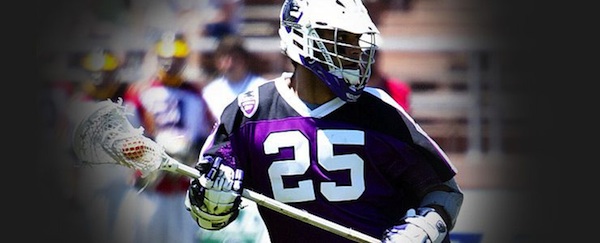
Winning three consecutive playoff games by one goal and going on to win the championship in any sport is a tough feat, regardless of level. Doing so in the first season of a team’s existence is even harder. Nevertheless, the Palo Alto boy’s lacrosse team did this just four years ago as Paly’s newest sports team. Many of the players picked up the stick for the first time, while only a select few had played before.
Baseball, basketball and football provide our country’s youth with games and competitions throughout each state and almost every child plays one of these sports in their earliest years. These three sports are played at almost every high school and at top universities from the Pacific to the Atlantic. There are currently 211 Division I baseball teams, 350 Division I basketball teams and 238 Division I football teams. Lacrosse is a little different, with only 63 Division I teams. On the East Coast, most high schools, public and private, have established lacrosse programs, while in the West, only a few schools have lacrosse teams.
The number of Division I teams shows the big difference between the culture of the sport in the separate regions. California, Washington, Oregon, Arizona, Nevada, Idaho and Utah combined have zero men’s Division I teams. The farthest teams to the West are Denver University and Air Force Academy in Colorado. On the other hand, there are 53 Division I teams combined in Rhode Island, Connecticut, New York, New Jersey, Maryland, Virginia, North Carolina, Delaware, Pennsylvania, New Hampshire and Vermont. That means that 53 of the 63 total Division I teams exist in the Northeastern states. According to Kris Höglund (‘12), a freshman walk-on at Division III Tufts University, this difference is due to the integration of the sport.
“Kids on the East Coast pick lacrosse up from a very young age, the way kids on the West Coast do with baseball or soccer or basketball,” Höglund said. “The sport is ingrained in a lot of the culture out here, and there is a strong tradition of lacrosse. East Coast prep schools were the real start of lacrosse, where schools on the West Coast are still just getting teams, like [Paly’s].”
Höglund started playing lacrosse with the Palo Alto Tomahawks, one of the many Bay Area youth club teams that allows players to start before high school. The club was founded in 1990 and has had teams ranging from U-9 (players under 9 years of age) to the high school club level. One of the major reasons that the Palo Alto lacrosse team was established was to serve as a higher level competition for these players, mixed in with the competitiveness of Palo Alto sports. Since more high school teams are starting up and the sport is getting more popular, Höglund feels that the playing field will start to level in the future years, with the West producing more top prospects.
Jamie Nesbitt, the girls’ varsity coach, agrees with Höglund that lacrosse in the East is much stronger, but asserts that the West is bringing out more athletes which will play a big role in the future of the sport.
“One of the major differences between the East and West in terms of lacrosse is the infrastructure supporting the sport,” Nesbitt said. “With the obvious advantage of being established for a longer time back East, there are more opportunities to play and (more importantly) more referees and coaches to support the game.”
Nesbitt testifies to the fact that because of a better infrastructure, lacrosse in the East is more physical as well. She says that the interpretation of lacrosse in the West is that the style of play is slower and fewer programs are competitive. Along with many other former players from the East, Nesbitt believes that this gives the West more potential for expansion. Chris Rotelli, a former University of Virginia player and Tewaaraton (best NCAA lacrosse player) winner, believes that the East is almost at capacity for growth, while everywhere else in the country is gaining ground quickly.
“The West has an advantage because we can play outside year-round,” Rotelli said. “However with the growth of box lacrosse (lacrosse played indoors on a hockey rink covered with turf), East Coast players have just as much access to the game year-round. I anticipate that players will come from all over the country (and Canada), and it will be closely tied to the coaching they receive growing up. You will see players from all over the country continue to come out of the same programs, but those programs will be nationally diverse.”
Most of Paly’s lacrosse players have come from local club teams such as the Tomahawks, but the past few years, there have been a couple players from the East. William Hare (‘14) came to Paly from Princeton, New Jersey, last year as a sophomore and contributed immensely. He moved back to New Jersey for his junior year, but is returning to Paly for his final season. He feels that the difference he has noticed while playing lies in the intensity of the sport.
“West Coast lacrosse has been relaxed,” Hare said. “East Coast on the other hand is much more serious (in terms of high school lacrosse a least). We have three hour practices after school Monday through Saturday, and sometimes we have to run 2.5 miles before school.”
While the West has seemed to be slow to the party in terms of producing top prospects, Höglund, Rotelli and Nesbitt say the future is looking good for players in the West, as more and more athletes are getting recruited at the Division I level. Since there are no Division I universities west of Denver, the highest chance of getting noticed by a coach is by playing with one of the traveling club teams. These teams have provided many players the opportunity to play at tournaments attended by college coaches in order to gain more exposure. By producing more teams at the top level that can travel and play with the best teams in the East, coaches will start to realize that the West is catching up in skill level and should be a strong region for years to come.
Some colleges in the West, like USC and Stanford, have talked about getting a Division I team in the next few years, which would be a huge step in bringing the West Coast to the level of the East. These are just rumors, but the fact that these rumors exist gives hope that more colleges and schools will establish teams in the future. While football, basketball and baseball reign over other sports in terms of popularity in the West, look out for the expansion of lacrosse at all levels as it is currently the fastest growing sport in the country. <<<



